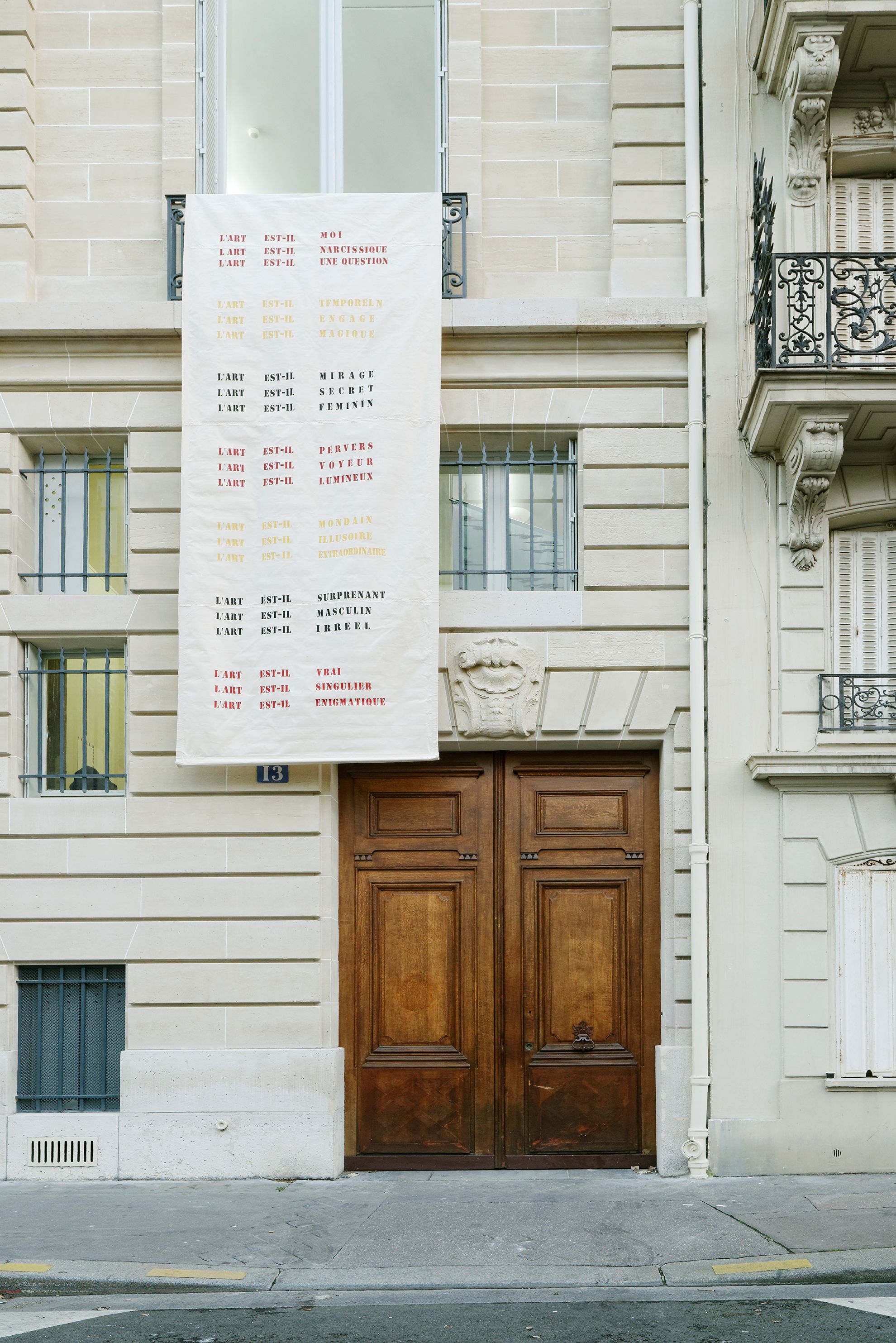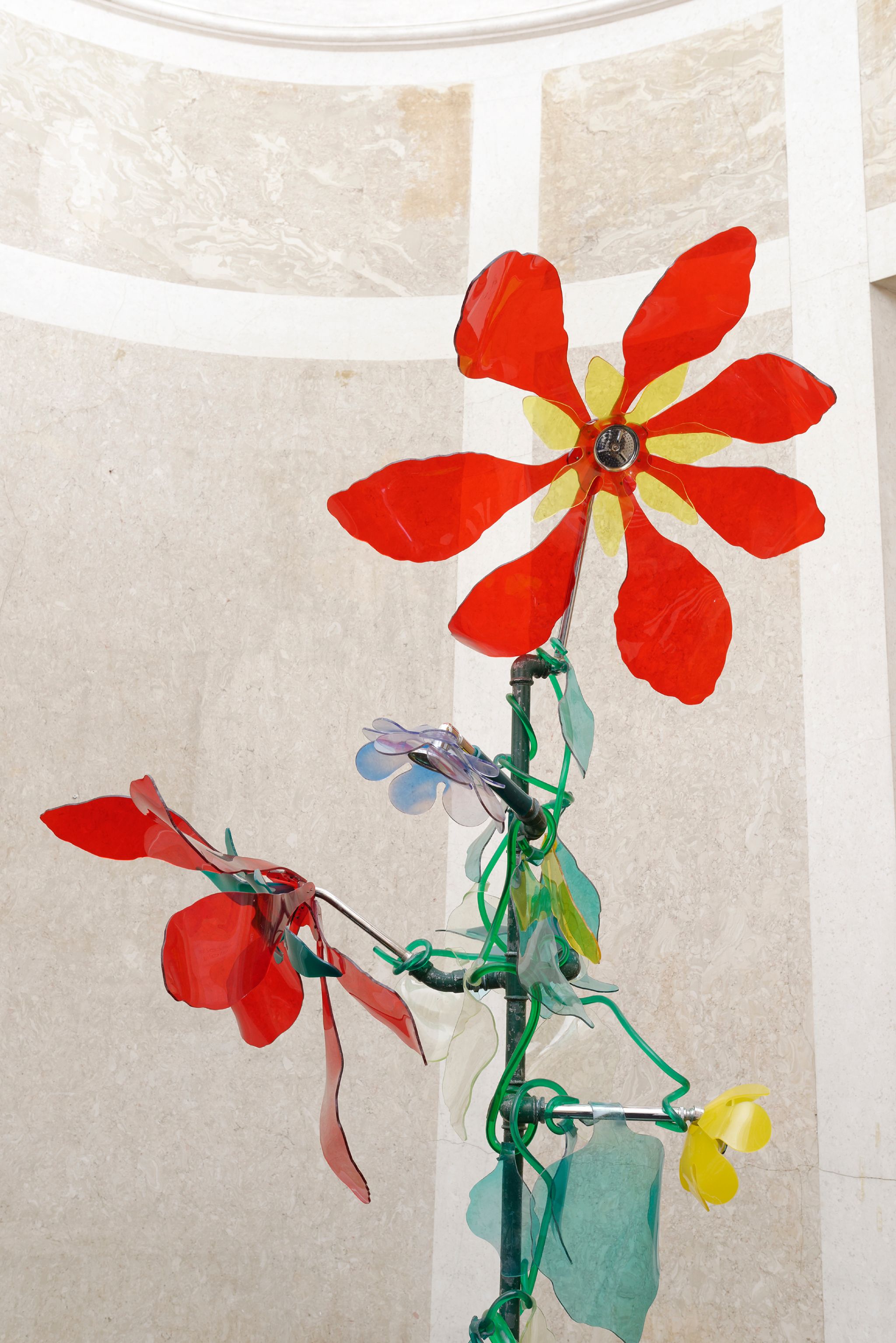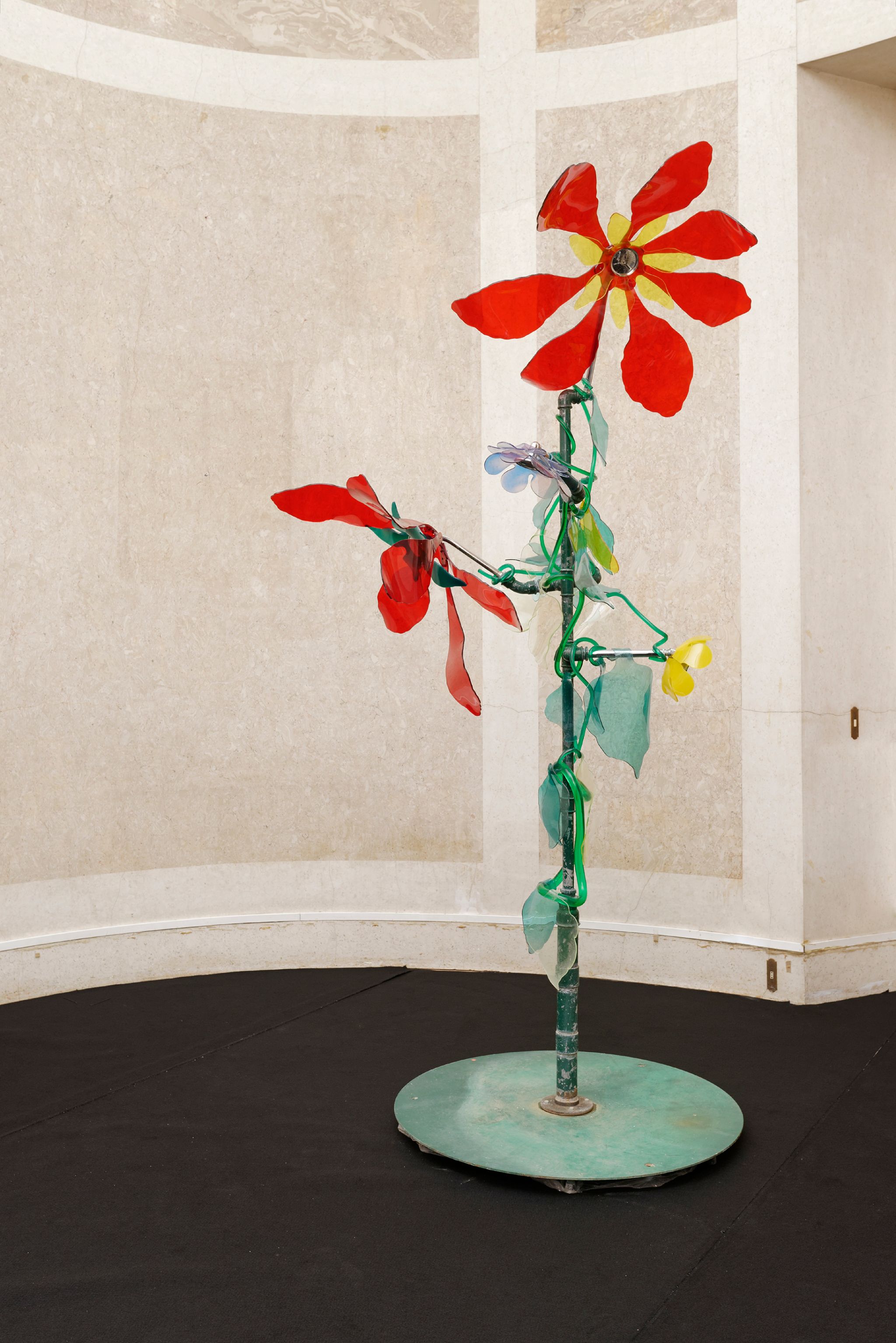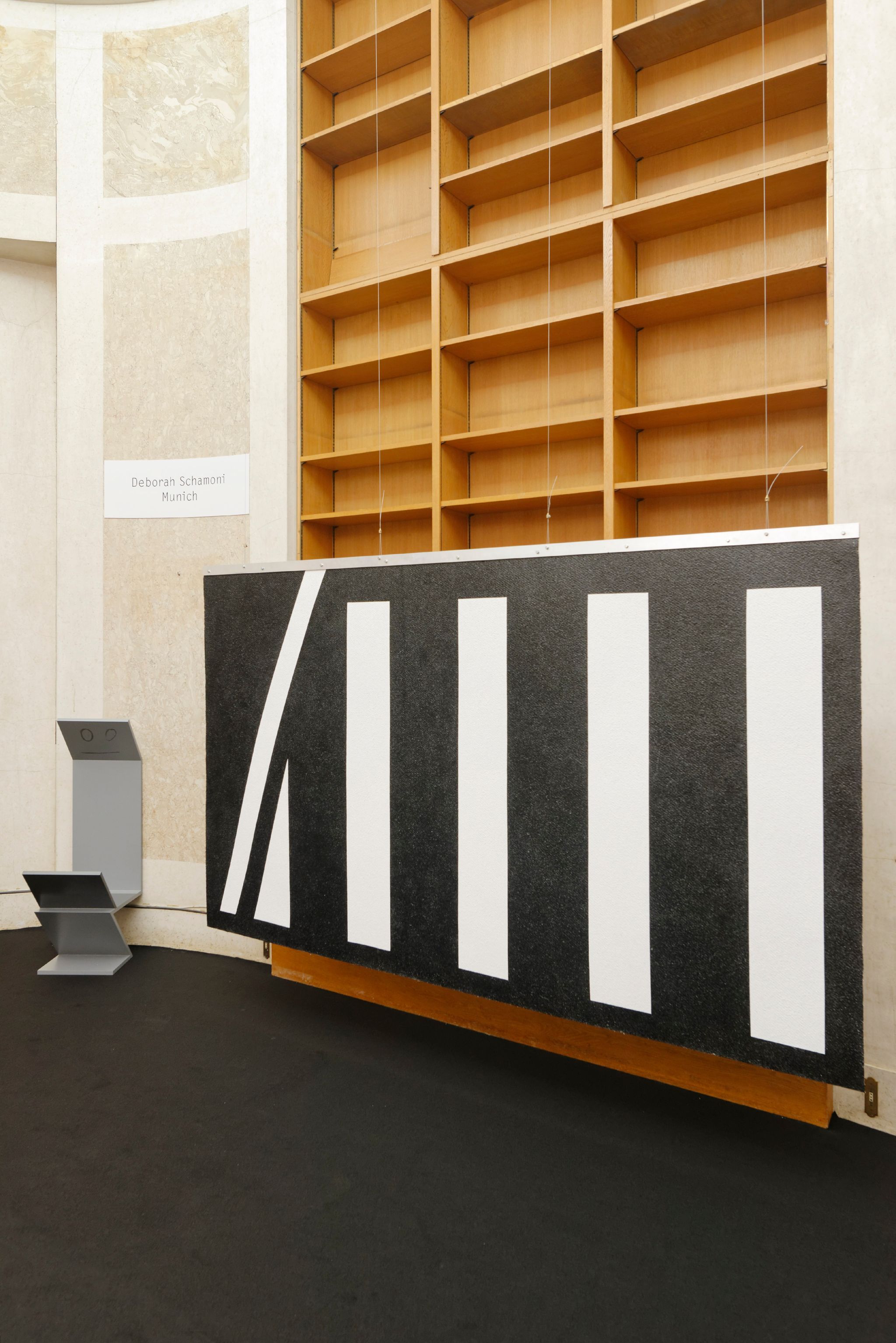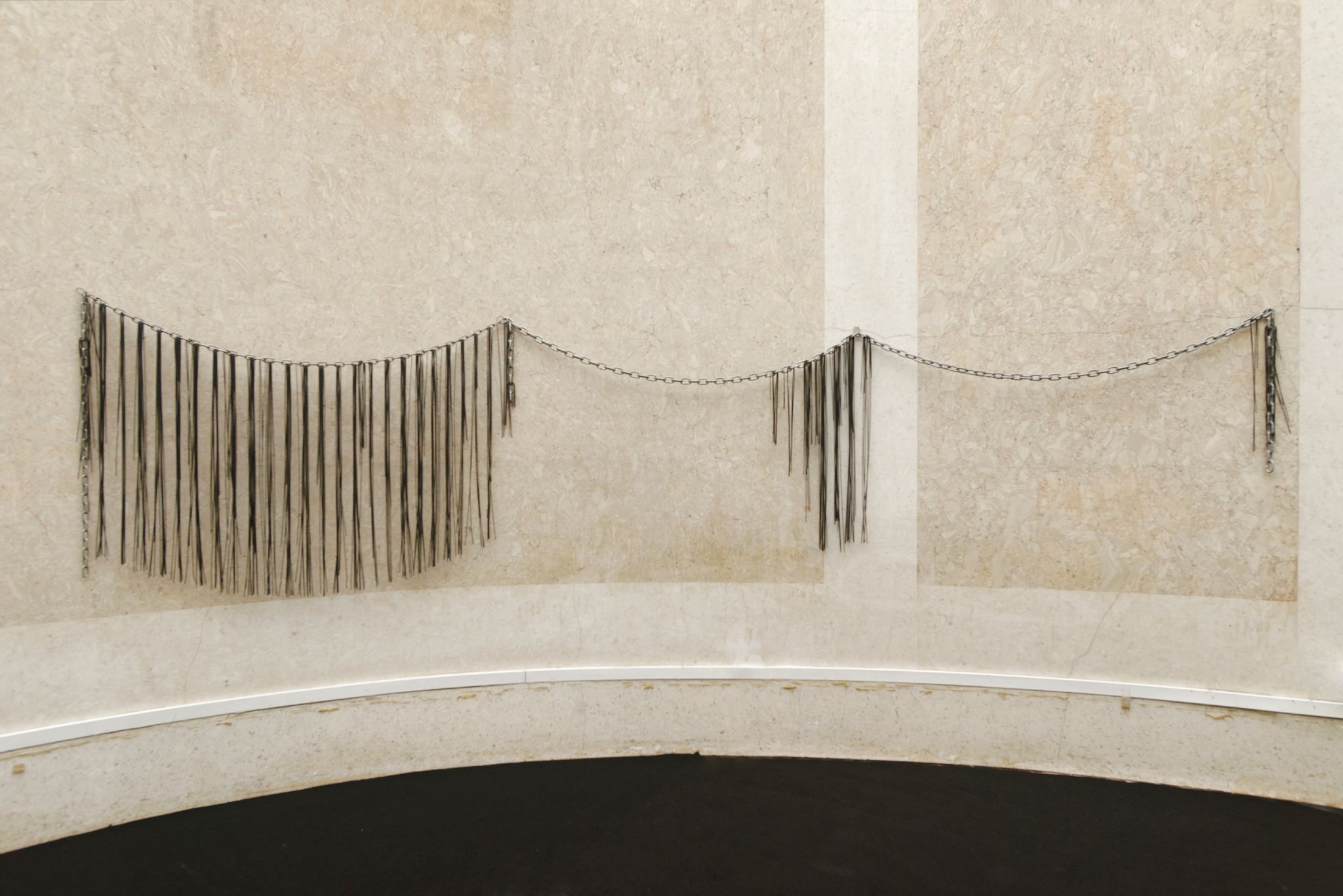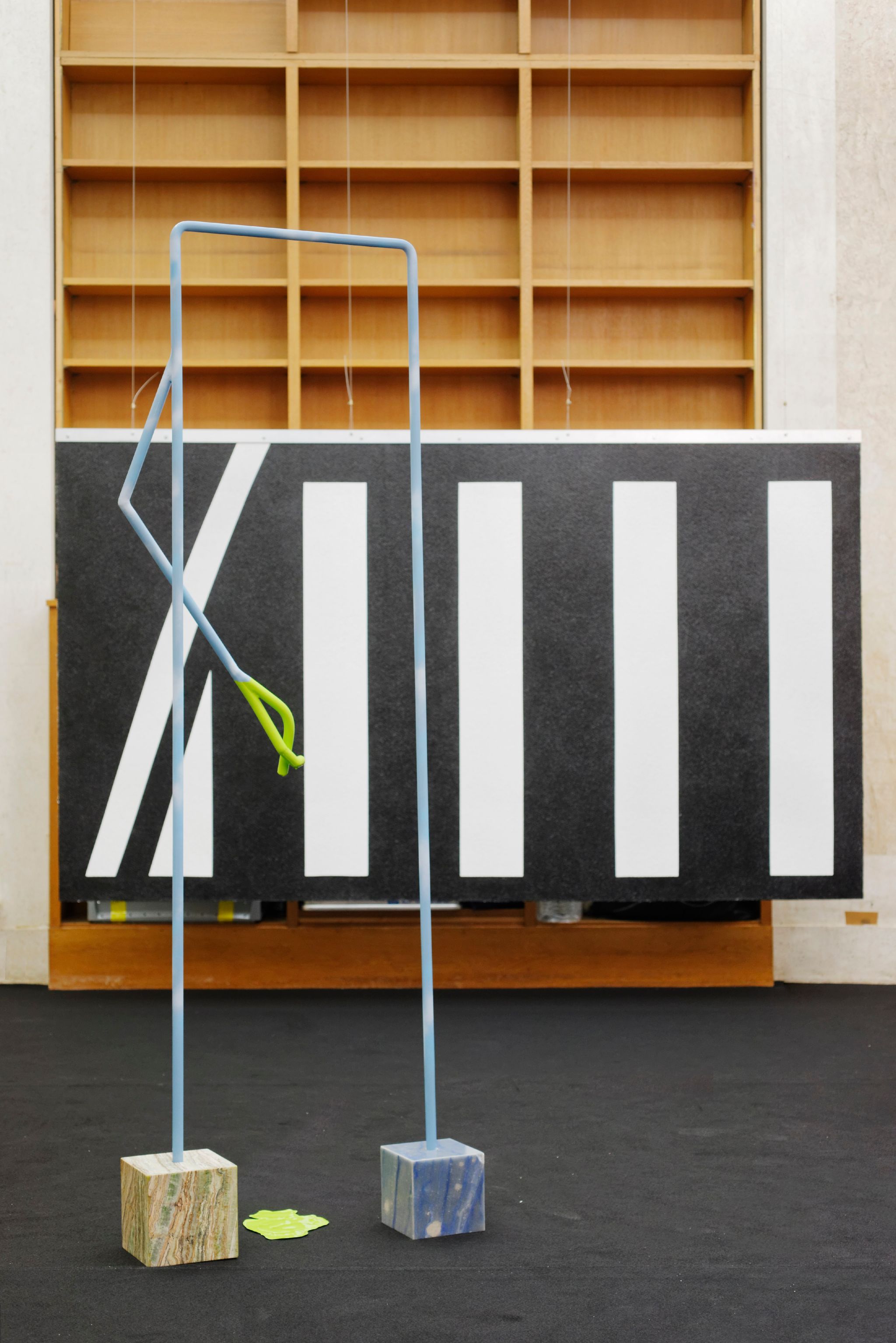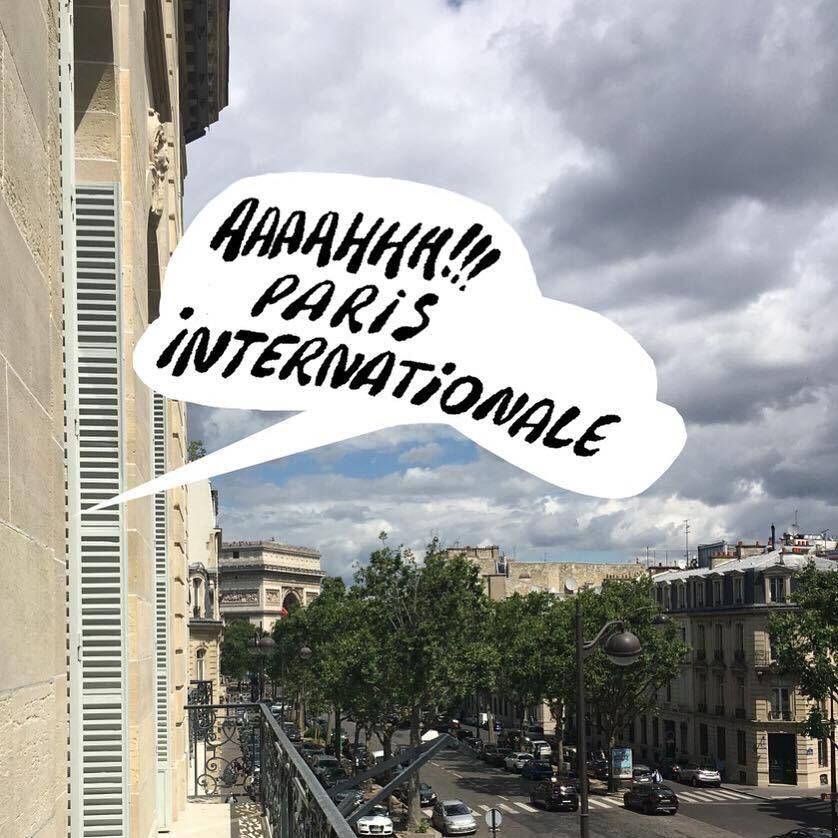The Argentine-French artist Lea Lublin (1929-99, born in Poland) began her career as a painter in Buenos Aires, before radically changing courses in the mid-1960s to create art that would offer the greatest possible agency and participation for its audiences. Lublin belonged to a generation of artists committed to overcoming the boundaries separating “art and life”. She was recently the subject of a retrospective at the Lenbachhaus Munich in 2015.
read more
Eric Sidner (*1985, U.S.A.) uses materials like silicone, plastic, Styrofoam and epoxy to create sculptures that repel and attract simultaneously. Sidner is from Houston, USA, and currently lives in Berlin. He attended the California College of Arts in Oakland, California, where he received a BFA. Following this he was a guest student at the Städelschule, Frankfurt, and a resident at de Ateliers, Amsterdam.
Beginning in Sismógrafo in Porto and continuing in Munich, Conversation in a Yes/No Landscape. Insect, Incest is the first time that Gerry Bibby and Henrik Olesen have collaborated. As part of a longer process, the works have been developed for different scenarios embedded in a particular Yes/No Landscape. Within these various constructed social-landscapes, images were created that follow direct or fictional-narrative traces and signs.
In her work, Flaka Haliti (*1982, Kosovo) examines the experiences of migration between cultures and social systems as well as the construction of boundaries and marginalisation. Is it you, Joe? (blue liar) is part of an ongoing series that was started in 2015, in which Joe, an alter ego, is used as a tool to respond to the framework of the fast capitalistic system where artists find themselves constantly in the loop of working rapidly, following the market’s request to continually come up with a new product. Haliti currently lives in Florence as the recipient of the 2016 Villa Romana prize. She was recently awarded the Ars Viva Prize 2016 and, in 2015, she represented Kosovo at the 56th Venice Biennale.
Judith Hopf (*1969, Germany) uses forms of expression like performance, video, sculpture and graphics. Hopf’s view of social processes is a decidedly offbeat one: For her, it is expressly not about the direct depiction of social and political facts in the medium of art. Instead, she makes use of art as an autonomous space within which the status quo can be shaken up. Especially for her work demanding aesthetic autonomy, it gains the chance to speak around current discourse in a productive way. Hopf currently has a solo exhibition at Museion, Bozen, and is featured in the 2016 La Biennale de Montréal. In 2017 she will have a solo show at the Hammer Museum, Los Angeles.Davide Stucchi (*1988, Italy) devotes his research to the exploration of the “materiality” of an artwork, following an interest in the strategies of vision that allows it to subvert its objecthood. Stucchi defines himself as a “sculptor” even if a large part of his practice unfolds as minimal interventions: engraving leather with fire; shaping spaghetti pasta into forms; accumulating dust. Stucchi was recently artist-in-residence at Triangle, Marseille, and is currently featured in the 16th Art Quadriennale in Rome.

